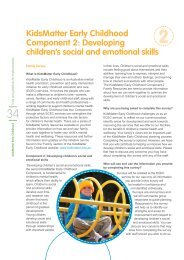Scaffolding children's learning - KidsMatter
Scaffolding children's learning - KidsMatter
Scaffolding children's learning - KidsMatter
You also want an ePaper? Increase the reach of your titles
YUMPU automatically turns print PDFs into web optimized ePapers that Google loves.
How parents and carers<br />
can help<br />
Parents and carers scaffold children’s <strong>learning</strong> by<br />
leading and coaching them towards coming up with<br />
their own answers. This shows children how to learn,<br />
and makes it more likely that they will succeed. The next<br />
time your child asks for help, you might try some of the<br />
following ways to scaffold thinking and <strong>learning</strong>.<br />
Prompt children to extend their thinking<br />
• Ask them to think about something relevant:<br />
“Why do you think…?”<br />
• Ask them to think through alternatives: “That would<br />
be one way, what’s another way we could try?”<br />
• Provide support for thinking through diffi cult tasks:<br />
“Let’s have a think about this together.”<br />
Tips for scaffolding<br />
children’s <strong>learning</strong><br />
• Provide a challenge that is just beyond what your<br />
child can already do easily by him or herself.<br />
• Give prompts.<br />
• Ask questions.<br />
• Model the steps involved.<br />
• Praise your child for attempting the task, not just<br />
for succeeding.<br />
• Watch to see if your child is struggling or becoming<br />
frustrated, as these may be signs that the task is<br />
too hard.<br />
Ask them to explain the steps<br />
• Help children to plan their approach: “What is it that<br />
we need to do?”<br />
• Ask them to review their steps so far: “Tell me more<br />
about what you have already tried?”<br />
Demonstrate<br />
• Show an example and talk it through:<br />
“First, I will…, and then I will…, and then I can…”<br />
Break it into steps<br />
• Help children who are stuck by breaking the task<br />
into smaller steps.<br />
• It’s a good idea to ensure the fi rst step involves<br />
something that children can already do. This way<br />
they will experience success early which helps<br />
their confi dence.<br />
• Be sure to provide praise for completing each step<br />
as they work through a task.<br />
• Guide children step-by-step to build their skills<br />
so they can eventually complete the whole task<br />
on their own.<br />
This resource is part of a range of <strong>KidsMatter</strong> Primary information sheets for families and school staff.<br />
View them all online at www.kidsmatter.edu.au<br />
Copyright: © Commonwealth of Australia 2012-13. This work is copyright. You may use this work in accordance with the terms of licence available at www.kidsmatter.edu.au




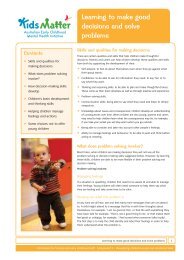
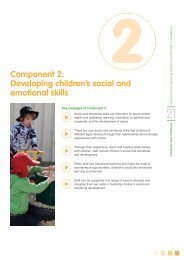
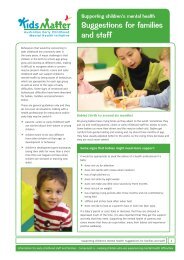




![Trinity Anglican School - Cairns story [378KB]pdf - KidsMatter](https://img.yumpu.com/41716076/1/184x260/trinity-anglican-school-cairns-story-378kbpdf-kidsmatter.jpg?quality=85)
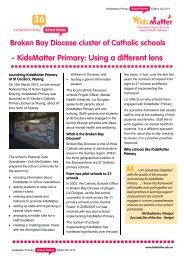
![Happy families work together [327KB] PDF - KidsMatter](https://img.yumpu.com/40767384/1/184x260/happy-families-work-together-327kb-pdf-kidsmatter.jpg?quality=85)

![Action Team Handbook 2012 [1.9M] [PDF] - KidsMatter](https://img.yumpu.com/38050920/1/184x260/action-team-handbook-2012-19m-pdf-kidsmatter.jpg?quality=85)
![[1008KB]pdf - KidsMatter](https://img.yumpu.com/38050895/1/184x260/1008kbpdf-kidsmatter.jpg?quality=85)
